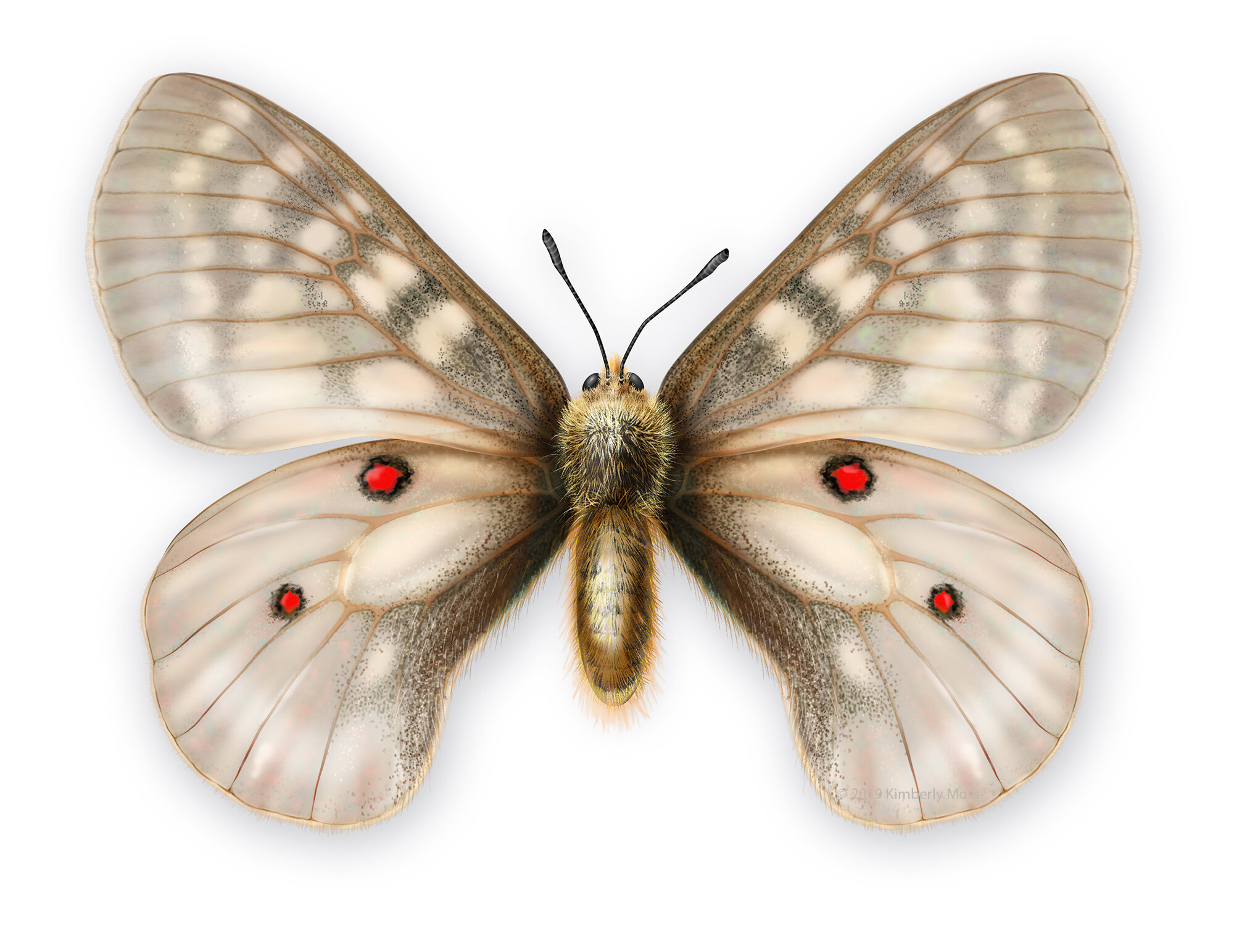













I am drawn to the smaller things in nature–the complexity of organisms that inhabit an area—I stop often during hikes to crouch down near the ground, discovering a “forest within a forest.” Drawing is a means for me to untangle, understand, and process the intricacy of form and the myriad of micro and macro functionality–individual parts and smaller systems working together to serve and connect to a larger whole.
Much of the work I create is detailed and multi-part. My goal is to bring the viewer into the content, engage one with the unique characteristics of an organism, and to showcase how it grows, behaves, and survives. The following pages are examples of this work and feature a range of adaptations.
All text and images ©Kimberly Moss

Dicentra cucullaria, or Dutchman’s Breeches, is a fascinating, delicate, and beautiful native spring ephemeral of North America. Growing in rich loamy soils of deciduous forests, it signifies new growth, a transitional stage; blink your eyes and you may miss its fleeting presence. Get a chance to look at it, really observe it, dissect and draw its form, your reward is like opening a present to discover another gift within. The fern-like leaves are beautiful fans, arching above the ground, comprised of carefully organized leaflets. They spring up from smooth pinkish colored tubers that are huddled at ground level in a cluster. The pendent-shaped flowers, with two outer opposite spur-like petals, have subtle topographical ridges and end tips that curl up into little domes. Enclosed within these “breeches” is a central pistil that is flanked by two stamens, hidden from view. Peeking out from the bottom of the outer petals is the distal end of the pistil and two more inner petals, which are connected and visible just below, dangling bell-like. If pollinated, the pistil will form into a green, sleek pod, with beautiful shiny black seeds within. These outer-worldly looking seeds are an ant’s delight. They have translucent fleshy finger-like projections called, elaiosomes, that the ants will gobble up and then discard the remaining seeds into a dump pile. Here, the seeds sit until they germinate to form new shoots.

Dicentra cucullaria was among other botanical works showcasing native species of North America in the Botanical Art Worldwide, America’s Flora; Linking People with Plants through Botanical Art exhibition. This traveling show, hosted by the American Society of Botanical Artists (ASBA), began at the U.S. Botanic Garden, in Washington, D.C., and was coordinated with 24 other countries featuring the unique flora native to each location. On May 18th, 2018, a day-long event connected these countries to celebrate botanical art, where artists were filmed, shared rendering techniques, and spoke about each piece. The pages above are from the catalog the ASBA produced for this exhibition and can be found at www.asba-art.org.

Thanks to a Disney Conservation Fund grant, I will work with my collaborator, Diane Debinski of Montana State University, over the next two years to create numerous visual assets for an exhibit and an iBook dedicated to the story of Parnassius clodius, a model species for tracking the effects of climate change. More to come soon!

As a biomedical artist, I am focused on effective communication and engagement in content concerning the challenges we face today: the loss of biodiversity, the ramifications of climate change, and the burning of fossil fuels. I value creating accurate and engaging visual materials that draw the viewer into complex issues, such as acidification, shown in this piece, which has been exhibited in galleries nationwide.

Pteropods, or sea butterflies, are microfauna that are only 1-8 millimeters in size and easily go unnoticed in a vast ocean of more visible creatures. Yet, these small zooplankton are being affected by ocean acidification in a huge way. Corrosive waters caused by increased carbon-dioxide emissions are distressing pteropods with shells, like Lamacina helicina, featured here.
As ocean acidification levels increase, their shells are becoming fragmented and dissolving. There is evidence that by 2100 there will be a significant increase in ocean acidity, greatly affecting these vital constituents of the base of the marine food web. This artwork aims to bring the minute beauty of pteropods into focus and to create awareness to their link to the burning of fossil fuels.

Trading pollinators was part of a team-based learning project that I had students complete in Applications of Scientific Illustration, a Biological/Pre-Medical Illustration (BPMI) course I teach at Iowa State University. The cards were part of a collectible set that were given away at Reiman Gardens, a wonderful botanical garden in Ames, IA. I created the Gertie card, above, to contribute to the project and lead the class in this hands-on experience that had impact in the community.

These character-based cards were part of a game designed by the students and match to nectar plant illustrated signs, scattered throughout the garden. Once a visitor matched the icon in the upper right of the card to the plant sign, they would punch a symbol attached to the sign to the lower right of the card, and then move on to the next pollinator. On the back of the each card, instructions described how to grow this pollinator’s host and nectar plants and to protect these species.
©BPMI and Kimberly Moss